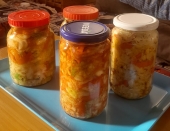Walt, Very good! Some in distributism talk about
"naturally occurring groups" which could be family or others who unite through commitment. Commitment is the foundation which started to crumble with the shift to individual wage earning. Marriage vows are no longer sacred and there are no commitments in an employment agreement - resumes are simply personal histories of broken relationships. Hannah Arendt states it well:
“The remedy for unpredictability, for the chaotic uncertainty of the future, is contained in the faculty to make and keep promises. … binding oneself through promises, serves to set up in the ocean of uncertainty, which the future is by definition, islands of security without which not even continuity, let alone durability of any kind, would be possible in the relationships between men.”
I think you're right that Japanese culture can teach us a lot. I have read that the rise of the Japanese auto industry was very much fueled by Demming's manufacturing philosophy combined with extensive cottage industry of thousands of family owned and run machine shops, partially an inheritance of a WWII Japanese war-machine decentralizing industry to make difficult targets for American B-29s. I'm told that even today that most machine parts are made in small family run shops. And sadly Japan is on the leading edge of the pathos of individual wage earning. They call it
Muen Shakai, literally “no-relationship society,”
"The paradigmatic example was “muen shi” (solitary death), in which people died unnoticed, their bodies undiscovered for days or weeks or longer, and no known family or acquaintances to claim the remains."
The only minor disagreement I have is that our rugged individual ethos/narrative hasn't always dominated American culture. It is an invention of modernity. The point when it reached critical mass was WWII. I call it the iron curtain of history- where life before it was forgettable and regrettable - and after it everything is all shiny and new and wonderful! We can now die alone amidst the splendor of the human artifice.








